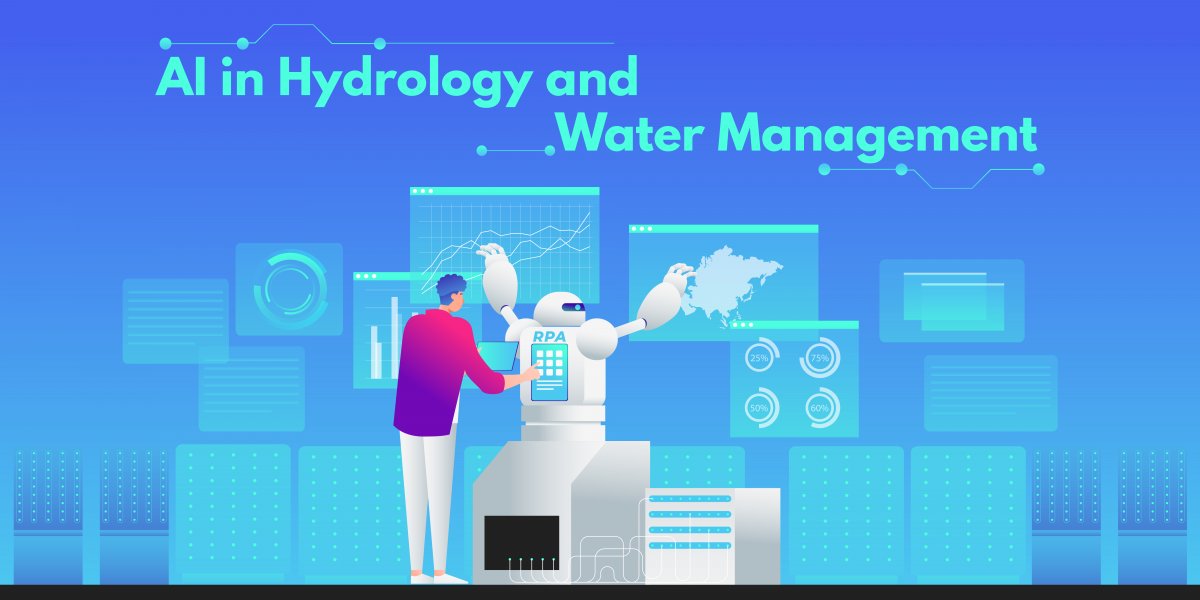The effectiveness of traditional physical models used in water resources modeling is limited due to their inability to simulate complex processes and their reliance on consistent observational data. The lack of access to such data hinders the development of these models. Furthermore, the challenges posed by climate change and increased hydrological variability make it difficult to create accurate projections using process-based modeling alone.
In recent years, there has been a rise in the use of data-driven models in water resources modeling, particularly with the adoption of artificial intelligence (AI) techniques. This shift has led to the development of advanced hybrid models that combine multiple data-driven models using AI in hydrology. These hybrid models have shown significant improvements in accuracy. AI-based models can utilize large-scale and non-linear hydrologic variables to generate reliable forecasts. As a result, AI in water management has gained popularity among researchers and practitioners in the field of hydrological and water resources modeling.
AI in hydrology has the potential to revolutionize hydrology and water management by enhancing data analysis, modeling, prediction, and decision-making processes. Here are some areas where AI in water management can make a significant impact:
Data analysis and monitoring
- AI can process large volumes of hydrological data, including rainfall, river flow, groundwater levels, and water quality parameters, to identify patterns, anomalies, and trends.
- With AI for water management, machine learning algorithms can be used to automatically detect changes in hydrological variables, predict future conditions, and monitor the health of water resources.
Flood forecasting and prior warning
- AI models can analyze real-time rainfall and river flow data to predict flood events with greater accuracy and lead time.
- By integrating historical data and weather forecasts, AI systems can issue early warning alerts to authorities and communities, enabling timely evacuation and implementation of flood mitigation measures.
Water quality assessment
- AI in water management can analyze water quality data collected from sensors and monitoring networks to assess contamination levels, detect pollutant sources, and predict water quality trends.
- Machine learning algorithms can identify patterns and correlations between water quality parameters, helping in early detection of pollution incidents and facilitating effective remediation measures.
Developing efficient water systems
There are two main challenges that water management bodies face.
The first challenge is to find new water sources due to the limited availability of this resource. The second one involves managing existing water reserves and systems in a sustainable manner.
- To address these challenges, researchers are exploring the use of AI in water management to develop advanced water plants.
- These plants would not only provide real-time statistics on the current state of water resources but also help in creating models for future usage.
- By employing AI-powered programs equipped with sensors and neural networks, water operations can be strategized dynamically and intelligently.
- Water management using artificial intelligence can enable various advancements. For instance, prediction models can be developed to forecast future water usage.
- Robotic sensors can be deployed in water disposal plants to enhance efficiency and effectiveness.
Drought monitoring and prediction
- AI techniques can assist in monitoring drought conditions by analyzing different parameters such as precipitation deficits, soil moisture, and vegetation health.
- Machine learning algorithms can identify drought patterns and predict future drought events.
- With AI for water management, individuals can make informed decisions about water allocation, conservation measures, and agricultural planning.
Optimizing existing water resources
- According to a UNESCO report, a significant portion of the global population lacks access to safe drinking water and proper sanitation.
- The report highlights the pressing need to maximize existing water resources in the face of increasing water scarcity.
- One potential solution lies in harnessing the power of AI in water management for decision-making and optimization.
- By employing AI in hydrology, governments and water departments can monitor water usage in real-time, detect losses and misuse, design efficient distribution networks, and prioritize financial sustainability.
- The collaboration between scientists and analysts on a global scale is crucial for ensuring the responsible and sustainable management of this invaluable resource.
Water resource management and planning
- AI in hydrology can assist in long-term water resource planning by simulating scenarios, assessing the impacts of climate change, and optimizing water allocation strategies.
- Machine learning algorithms can incorporate multiple variables, such as climate data, population growth projections, and socio-economic factors, to provide insights into sustainable water management practices.
The importance of water for sustaining life on Earth cannot be overstated. Unfortunately, in recent times, humans have taken this invaluable resource for granted. The alarming rise in droughts and water scarcity incidents across various regions has raised concerns among scientists, prompting them to seek more effective and resilient approaches to water resource management.
While the necessity of managing water and its resources has remained constant over the years, scientists have recognized the need to adopt a fresh approach in designing and maintaining existing water management systems. Water management using AI has got tremendous scope and potential. Through the utilization of technologies such as AI in water management, scientists are now actively constructing sustainable water supplies to cater to the needs of people worldwide.

